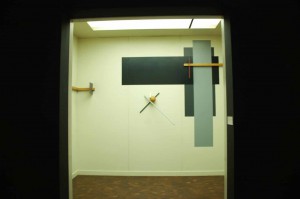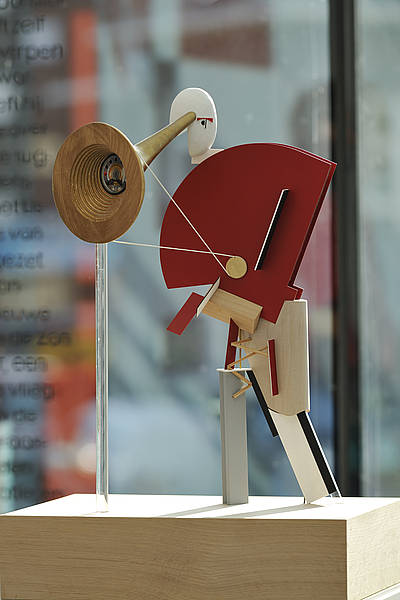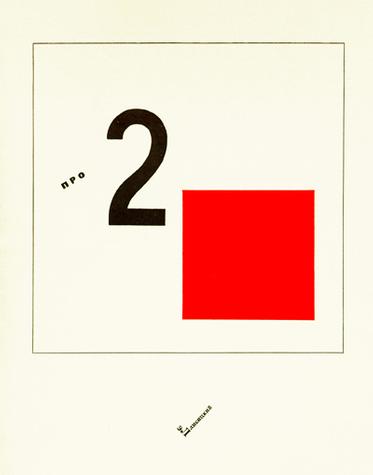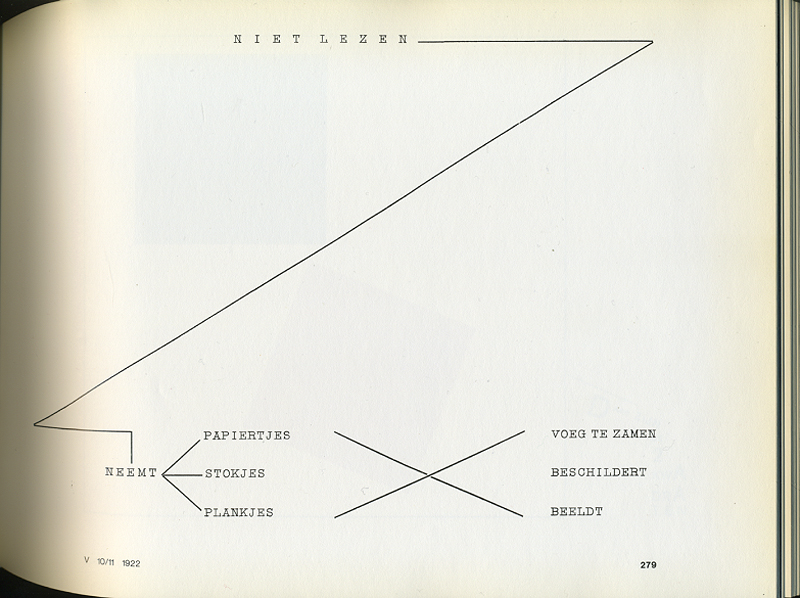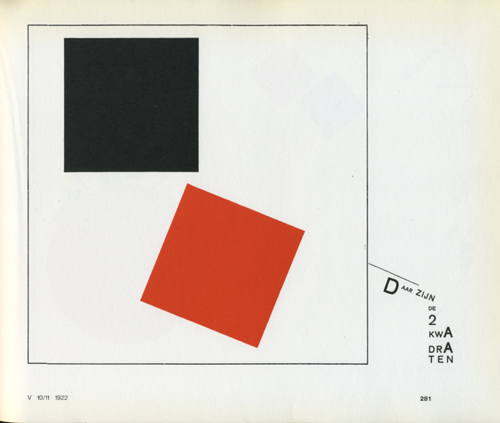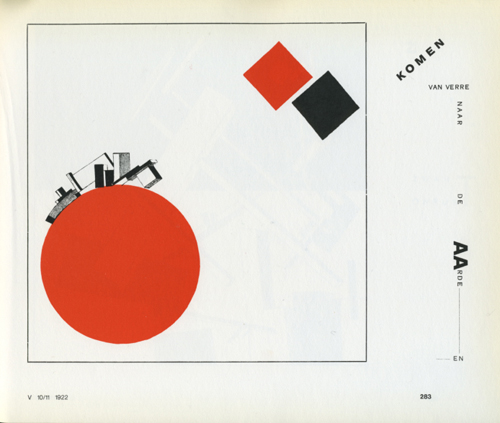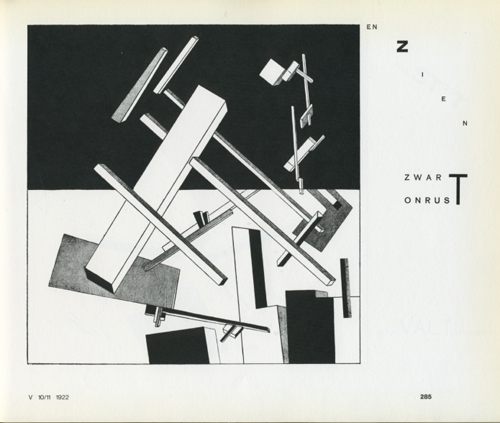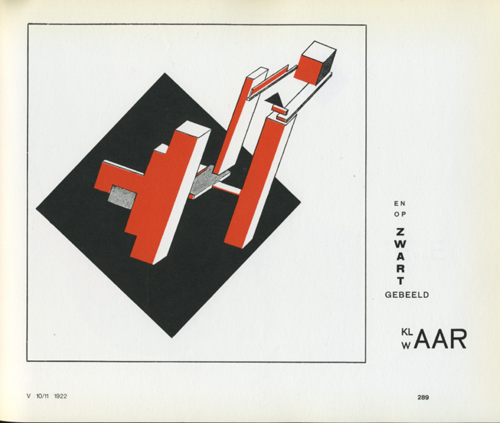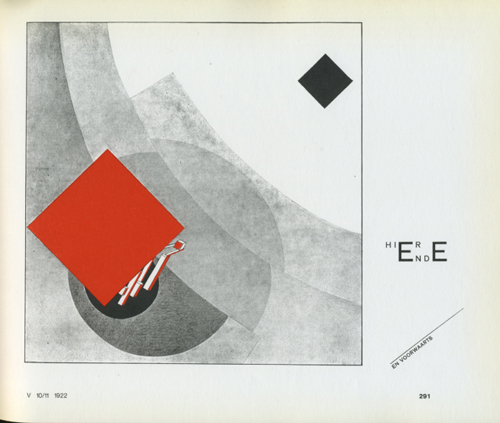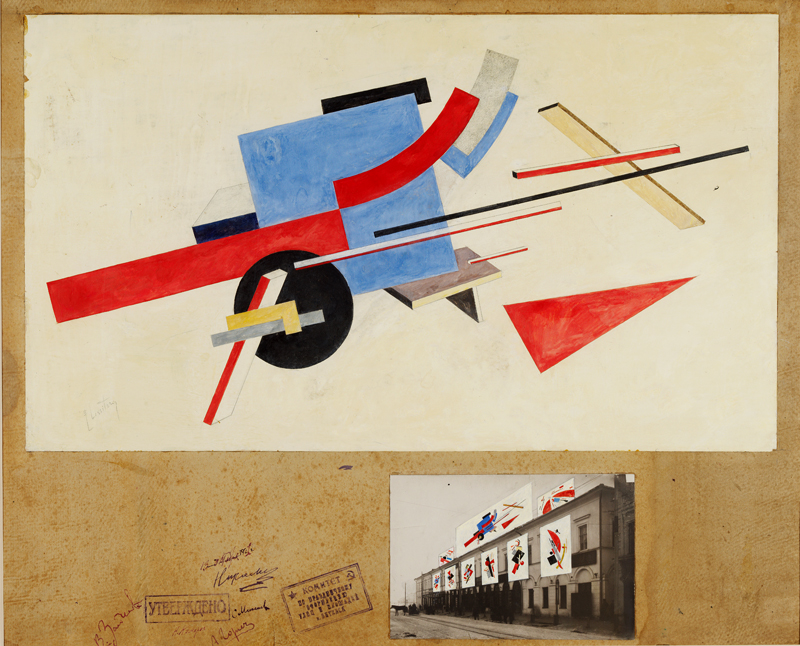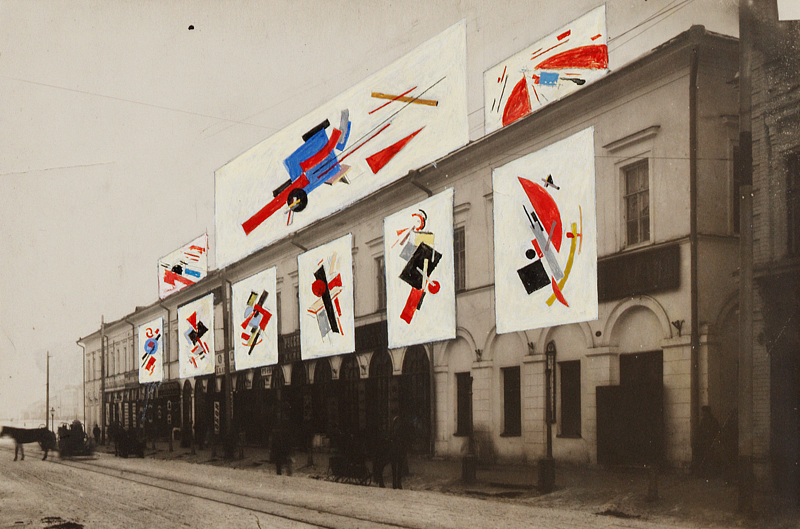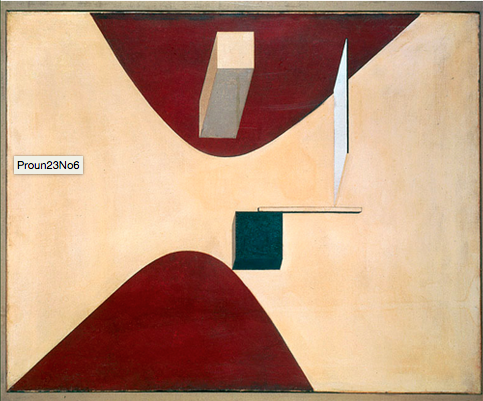Being forced to see geometry everywhere and anyhow was an interesting experience at Van Abbe museum.
I feel a certain panic when I enter a museum. The urge to discover something to relate with grows bigger and bigger so then I’m obliged to think about the works surrounding me.
In my search for something familiar, I saw a black cube in one of the first rooms of this museum. I had then the curiosity to pas through a claustrophobic space to get in it. The first seconds I was feeling only disgusted by the crowded environment around me.
Proun was presented in this black cube, a black cube, that I associate with a black square so, of course, with political suppression. I was faced with a completely contrasting but yet, perfectly compact universe. As his paintings give the viewer the space feeling, there’s no wonder he is strongly relating with the 3d world as well.
Exploring Lissitzkys well defined visual language made me think more about politics in a way or another, that may be because I feel a certain irony in some of his works.
In a time when society was build on a strictly determined target of organizing and developing masses by being as productive as possible, he was trying to spread positive and gratefulness messages in a world were starving was the main problem. That’s quite ironic.
Still, it seemed to me that Lissitsky was more preoccupied with his intention of exploring and playing with geometrical forms and symbols, rather then with this political propaganda. Lissitzkys interest in so many fields of art, like design, photography, typography and architecture it’s something to admire. That may be caused by the lack of means in expressing one idea, or maybe by his wish of being as free as possible.
His universe condensed in that black cube make me think about his freedom as an artist. His freedom and his natural speed of development that was trying to run away from art propaganda and was expressed in the most simple and abstract way.
